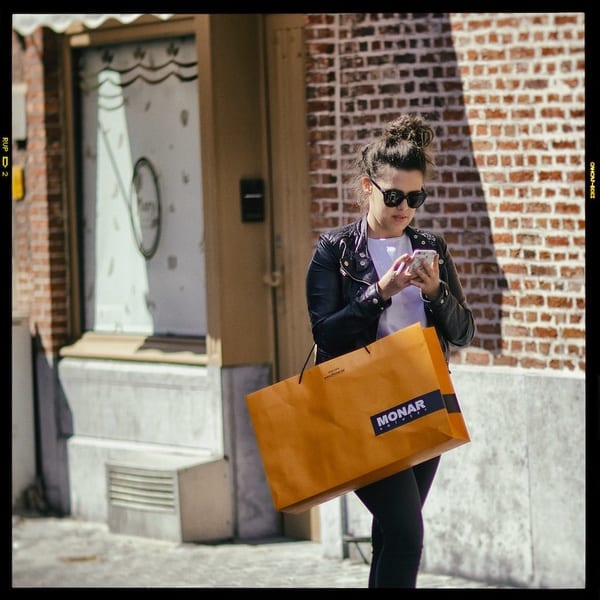Does Instagram Encourage Impulse Buying?
Discover how companies cleverly use social media platforms, such as Instagram, in their digital marketing strategies to convince users to buy impulsively.
Does Instagram encourage impulse buying? In short. Yes, it does. However, it is more complicated than that. Companies are clever in their digital marketing strategies especially when it comes to advertising on social media platforms, such as Instagram. In the 21st century, it is very rare that a mobile phone user does not have access to cellular data and does not have a social media account of some sort. Particularly among the younger generations. This makes online shopping even easier, as things can be one click away. So, what is impulse buying?
When a customer decides to purchase something spontaneously, without thinking of any possible consequences.
Shahpasandi et al, 2020
The customer does not necessarily need this product, but they have been persuaded by the ad they have seen. Most likely due to scrolling on a social media platform such as Instagram. Digital marketers rely and intend on this when developing these ads for Instagram.
Instagram Ads

Instagram first appeared as a social media for sharing photos. A business tool is now available to produce ads and market products easier, with the option to select a business profile. This provides promotional ad buttons and analytics features for the beneficial use of online stores (Handayani et al, 2018). Instagram ads can come in all shapes and sizes, such as newsfeed post ads; Instagram story ads; and influencer marketing ads.
How are they promoted?
Certain brands have been able to pay to push their ads to a specific target market (Carah & Shaul, 2016). Digital marketers create their ads to fit in with the culture and trends associated with Instagram at that time. As well as the specific users they are targeting.
Instagram posts and ads work off of an algorithm, and the use of hashtags i.e. keywords becomes very crucial. To catch the attention of potential buyers and non-followers, this is particularly important. When scrolling on one’s feed or through stories, sponsored ads that show tend to be of interest to the user. This is due to the Instagram algorithm collecting the user’s likes, pages they follow, and things they search for.
Personalised User Profile
With the ability to follow hashtags and certain retailers, every user’s Instagram journey is heavily personalised depending on their interests. Particularly with the ability to search content themes and search for various criteria in Instagram’s ‘Explore’ function (Halliday, 2019). Therefore refining a user’s viewed content and ‘feeding’ the algorithm. This creates a behind-the-scenes ‘profile’ for every user, that is used when targeting a specific market. It is very beneficial for digital marketers to use Instagram as an advertising method, as the algorithm almost does the work for them. As ads are so uniquely targeted towards users, they are more likely to be persuaded to impulse buy.
“Some 38.7% of online shoppers aged between 16 and 24 have used Instagram Shopping to buy, and retailers targeting this demographic should recognise the potential of social media beyond a marketing tool and as an additional sales platform that is especially effective at driving impulse purchases.”
Halliday, 2019
The Instagram Shop Button
Instagram has implemented this new feature as part of a recent update. A very clever tactic on their part, as it has been placed very strategically in the space the notifications button used to be. They knowingly did this, as people tend to be creatures of habit, and frequent Instagram users would click there accidentally. The idea behind this was for targeted ads to catch their eye. Although the idea behind Instagram shopping is great for small, independent brands, it can be problematic and provides huge corporations with yet another platform to take advantage of. Hence encouraging more over-consumption and impulse buying.
What Makes It Complicated?

Companies tend to involve and pay ‘brand ambassadors’ otherwise known as Instagram influencers to promote their products by paying them to make a sponsored post on their behalf. This is to influence their followers to purchase these products.
As a user, if you see your favourite influencer is promoting a certain product, you assume it is because they genuinely love it and think it is good. Therefore followers would be persuaded to also buy it. That is exactly the company’s intention.
However, this can be problematic. Some influencers will only promote and work with brands that they truly believe are good, aligning with their interests and morals. Others, however, do not do their research on the brand. They just ‘hop on the bandwagon’ to keep up with trends and stay popular, without considering the consequences.
Trends
Trends are a huge reason behind impulse buying. Today’s economy is super focused on consumption and trends are emerging and fading quicker and quicker with every day. Instagram is one of the fastest ways to tap into the trend momentum, providing retailers the ability to highlight popular pieces as they emerge and engage with consumers to build brand loyalty (Halliday, 2019).
Consequences of Impulse Buying
For the Customer
“Buying without thinking can quickly lead to overspending and the subsequent feelings of guilt.”
Forbes, 2015
Younger generations, in particular, may feel this guilt more heavily. Potentially then getting into trouble with their parents or guardians. Impulse buying is a huge cause of over-consumption, which may add to this guilt. In addition, it could potentially lead to overspending.
For the Company
After some thought, the customer may decide to return the product as they have realised it is not something they actually need or want. Retailers are facing increased financial losses from returned items, as well as the burden of deciding what to do with the number of returns (Wharton, 2020). Additionally, consumers purchasing impulsively or due to influencer marketing could give a terrible review of the product if unsatisfied. This is mostly due to no product research before purchasing. Lastly, retailers need to have the means to keep up with consumer demand of quick trends and Instagram impulse buying, otherwise advertising on social media could lead to a failed marketing channel (Halliday, 2019).
Sources
Carah, N. & M., Shaul (2016): https://journals.sagepub.com/doi/10.1177/2050157915598180
Forbes (2015): https://www.forbes.com/sites/rent/2015/07/07/impulse-buying-are-you-guilty/?sh=577d0aa157aa
Halliday, S. (2019): https://us.fashionnetwork.com/news/Instagram-shopping-gives-retailers-a-chance-to-boost-impulse-buys-say-analysts,1102335.html
Handayani, R.C. et al (2018): https://dl.acm.org/doi/10.1145/3278252.3278276
Shahpasandi, F. et al (2020): https://www.tandfonline.com/doi/full/10.1080/15332861.2020.1816324
Wharton (2020): https://knowledge.wharton.upenn.edu/article/high-cost-of-returns-should-retailers-rethink-policies/





Recent Comments